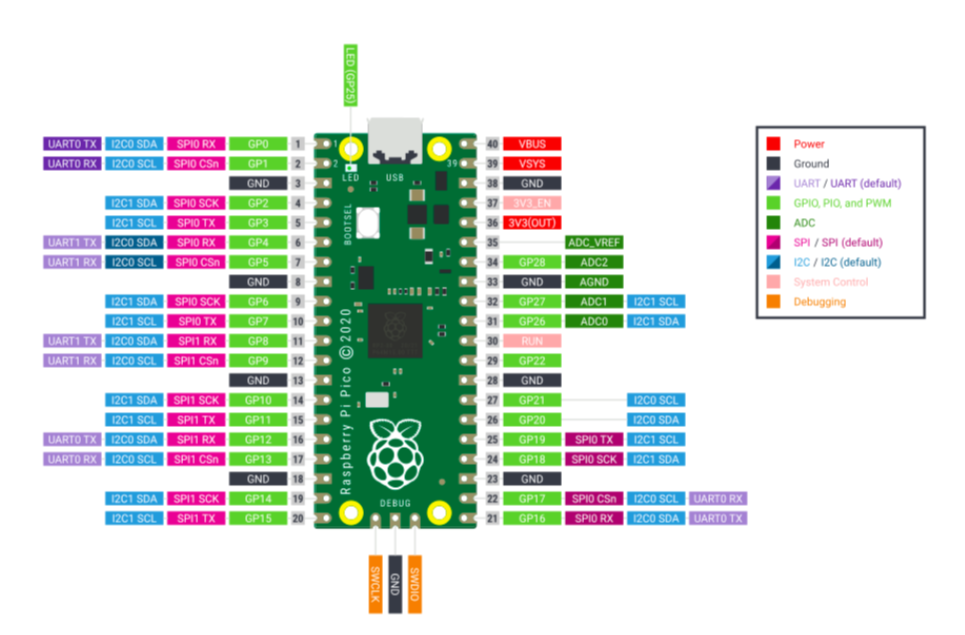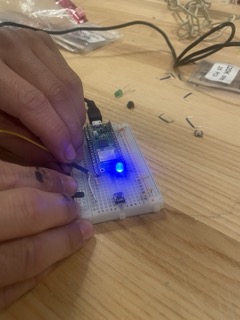As I mentioned in the electronics production week, I'm still learning the basics about electronics and circuits. For this reason, I spent the bulk of this time on tutorials. I am also very fortunate to have a friend, Shahriar Khushrushahi, who has a PhD in electrical engineering. He took time to sit down with me and explain some of the foundational concepts and I am very grateful for his help!
Shahriar recommended that I start with the Raspberry Pie Pico W as a more accessible microcontroller for a beginner. Before I could use the RPP, I had to solder header pins (this was my first time learning about header pins and the process of adding them). With guidance from Gail (thank you!), I successfully soldered for the first time! It was helpful to do this on a breadboard in order to keep the microcontroller steady while soldering.

Once I had the header pins attached to the microcontroller, I went through tutorials to cover the basics. The RPP website has great materials and I spent several hours going through the entire "Getting Started Guide". for the Raspberry Pie. I also reviewed the data sheet. Here is the pinout for the RPP:

I found all of this to be incredibly helpful. I breadboarded for practice and used Thonny (recommended by the tutorial). Thonny was new to me and required self-study as well. It also was a long process to set it up on my computer and I had to troubleshoot serveral issues before my microcontroller and computer connected. The microcontroller also required firmware updates and there were a lot of steps along the way before I could really get started. I eventually got it working, which felt like a big win by the time I got there!
For the use of Thonny, thanksfully I took CS50 this semester at Harvard and learned some basics of coding for the first time. In CS50, I gained some familiarity with C and python (which I knew nothing about before -- another essential thing to integrate into k-12 learning!). I'm glad I had the opportunity to practice these skills at the intersection of these two classes. Because I am still very early in this learning, writing code from scratch would have been beyond what I could do with the time constraints. The RPP website was helpful in providing the basic code. I read through the code to make sure I understood what was written. When I didn't understand, I used ChatGPT for explanations. This was also very helpful learning.
Now, finally set up with Thonny and with the micrcontroller working, I was ready to breadboard and practice inputs. While I was doing this, I also practiced some basic outputs to get ahead for next week. I completed the following which, given I had never touched electronics before, felt like a win.
1: Blinking the onboard LED on the RPP (output -- practice for next week)
2: Blinking an external LED with the RPP(output -- practice for next week)

3: Using a button to turn an external LED with the RPP (input)

For the purposes of this week's assignment, the button was my input practice. While I understand this is incredibly simple, it felt like an achievement to go through all of these steps and create a circuit for the first time. By the time I finished these steps, I was out of time for the week. The whole series of steps was very time-consuming and took so much troubleshooting as I made many errors along the way, doing this for the first time. Overall, I learned so much in this process.